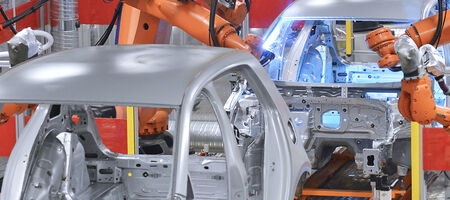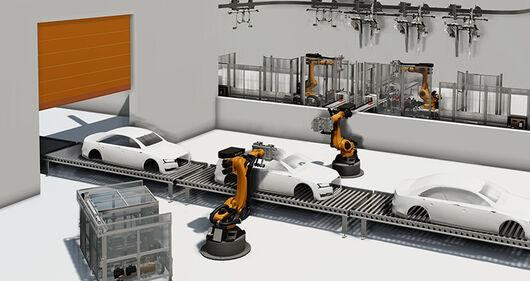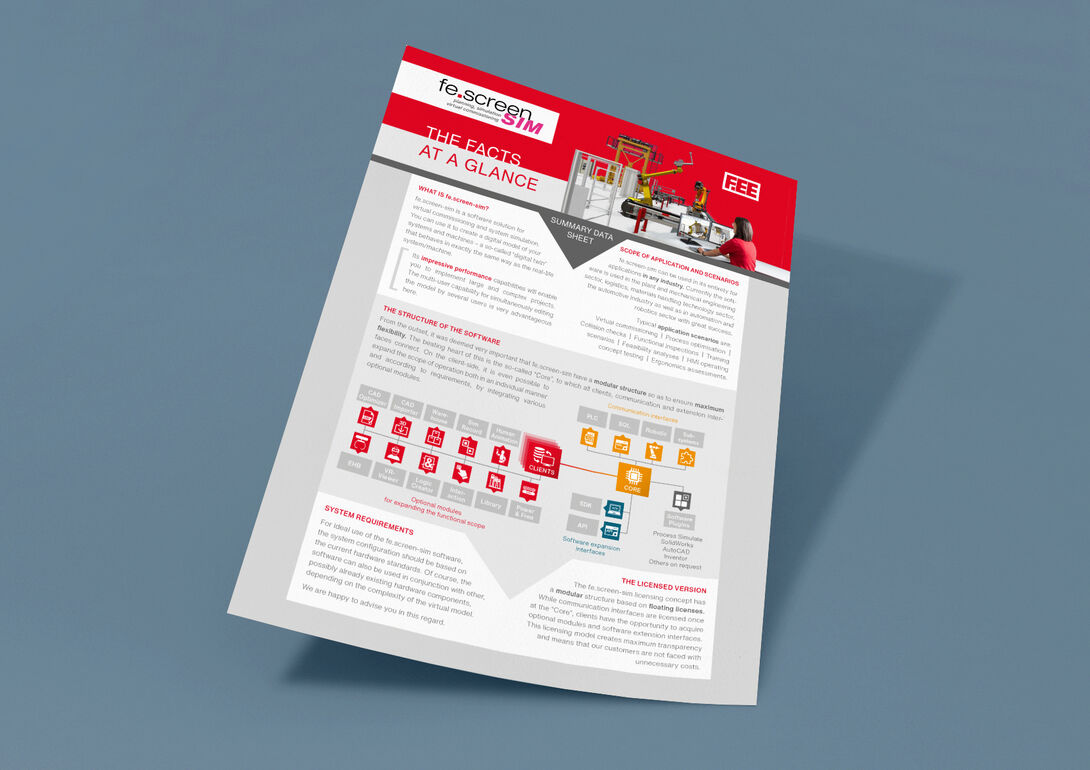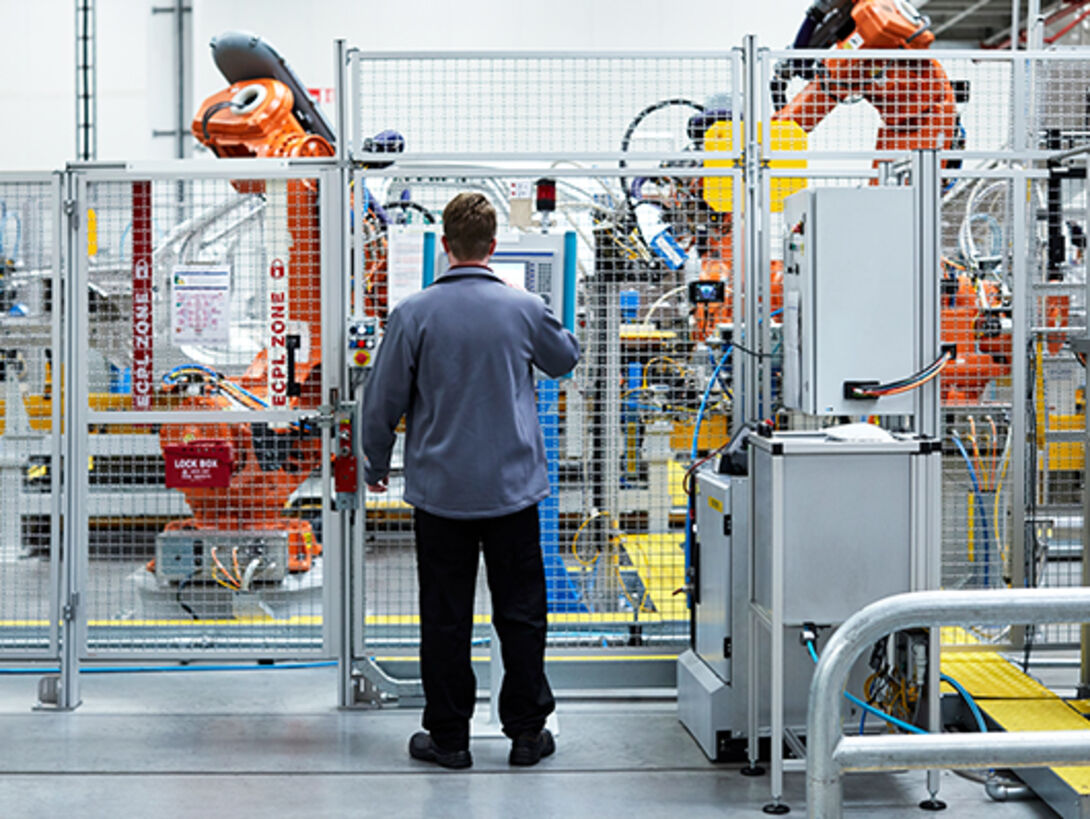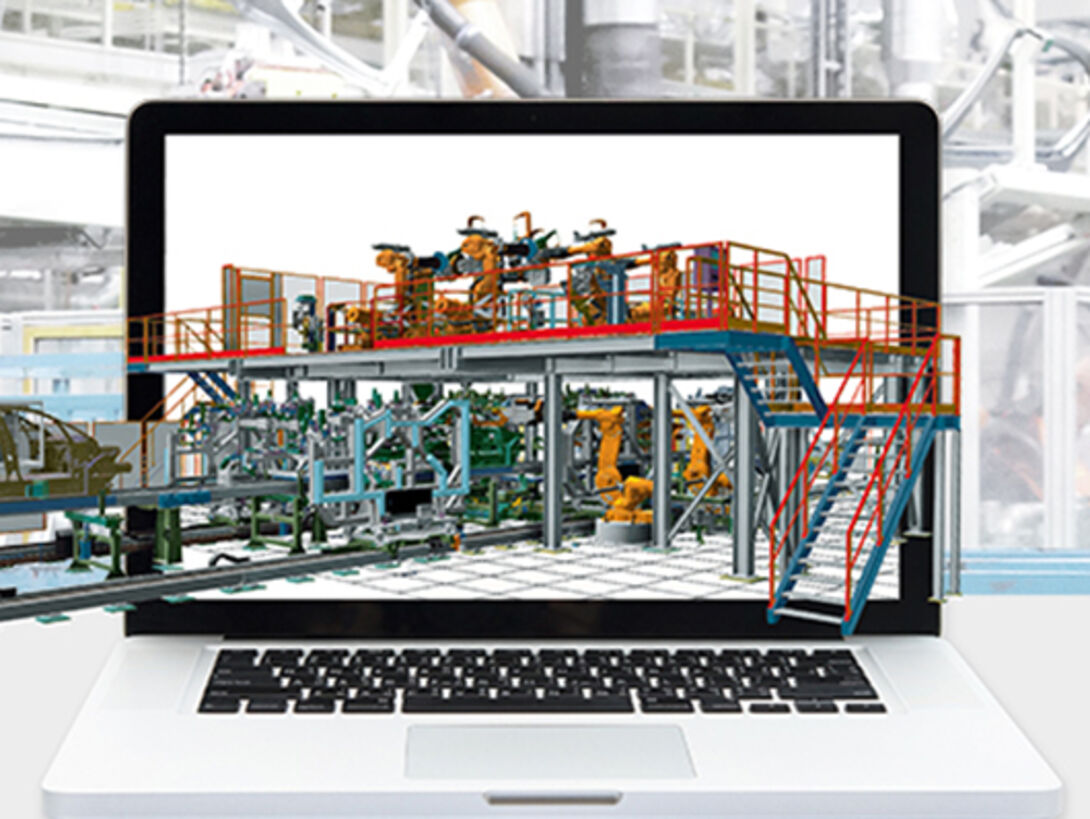Plant simulation in the automotive industry
The requirements in the automotive and supplier industry are high and will continue to increase in the future due to shorter model cycles and a growing variety of models. As a result, the time window for complete system development and commissioning is becoming shorter and shorter.
With fe.screen-sim, the increased requirements - for example, by shifting times from real to virtual commissioning - can be mastered. Thus even complex and time-critical projects can be successfully mastered. The fe.screen-sim solution is also very well suited for the simulation of plant conversions and expansions as well as for upcoming retrofit projects. In these cases, plant availability must be ensured within the shortest possible time. For maintenance purposes, scenarios can also be run through on the model without producing plant downtimes.
What is virtual commissioning?
Projects in the areas of component production, body shell construction, painting and assembly can be realized directly in the simulation together with the standards used in the automotive industry. Here, cycle time and sophisticated conveyor technology, such as electric overhead conveyors (EHB), Power & Free Systems or SKID and push SKID conveyor technology always play a decisive role. Without planning, simulation and virtual commissioning, no conversion or new construction of production and assembly lines or even entire production halls, including warehouses, would be possible today. The advantage: In the simulation, all this can be tested in combination and thus considerable benefits can be generated! The always strict specifications in terms of time and project management can thus be fulfilled and individual projects can contribute to the economic efficiency of holistic production concepts already in their development phase.
SOLUTIONS - HERE THE SIMULATION CAN BE USED
- Assembly systems
for engine, transmission and axle assembly, wedding station, cockpit, front end and panoramic roof assembly. - Electric overhead conveyors
for heavy and light loads incl. vehicle and component detection and all common modules, such as different types of rails and switches, stoppers, block points inclinations, floor changes, transfer units etc. - SKID conveyor systems
for all common rail systems, transfer units and linear units. - Skillet-SKID conveyor systems
for all common sliding modules and double floor rails. - Power & free systems
- Accumulation chain conveyor
- Warehouse systems
- Handling and stacking systems
- Car body construction robots cells
fe.screen-sim makes it possible to master the growing requirements – e. g. by shifting times from real to virtual commissioning. Thus, even complex and time-critical projects can be successfully mastered. In addition, fe.screen-sim can also be used for simulating system modifi cations and extensions as well as for upcoming retrofit projects or for carrying out training courses without system downtime.
TRADITIONAL and VIRTUAL commissioning in automotive engineering
Conventional commissioning
Conventional commissioning can be very costly and time-consuming. Especially when things do not run as planned. Errors in the software are often only discovered in the very late phase of commissioning. Troubleshooting then costs considerably more time, which, moreover, has not been taken into account in advance. The project comes to a standstill, which causes additional personnel costs.
Virtual commissioning
By modeling in the early design phase, PLC programmers secure their control code. The data can be conveniently entered via editor or imported from CAD programs. In this way, the plant or machine can be quickly modeled and tested in real time. The subsequent commissioning time is reduced by 15 to 30 percent. Customer satisfaction is correspondingly high.
Definition of simulation in automotive engineering
Through simulation and the use of so-called digital twins it is possible to plan and virtualize complex production plants in detail. Thus, from the mechanics and control technology of individual plant components, such as conveyor systems, robots or processing centres, to the higher-level control technology, processes can be simulated and tested in a network, and faults can be rectified even before the first plant fitter enters the empty production hall. Virtual commissioning thus considerably shortens the time required to complete a plant and thus to start production.

CLARIFY REQUIREMENTS AND TIMEFRAME FOR VIRTUAL COMMISSIONING
Are you responsible for plant planning and/or simulation? Are you looking for alternatives or additions to an existing system? Let us explain the advantages of fe.screen-sim to you and achieve added value through the functions of our software! In a personal conversation we can discuss your requirements.

